A Conversation With Carleton Ranney (JACKRABBIT)
(Jackrabbit world premiered in the Viewpoints section at the 2015 Tribeca Film Festival. It also screens at the Montclair Film Festival.)
Jackrabbit, the impressive feature film debut of filmmaker Carleton Ranney, has sci-fi roots but its own idiosyncratic form. The film is set in a dystopian future world with imprecise rules but omnipresent danger. In the wake of a catastrophe called “The Reset” the citizens of City VI survive under the control of the state and a shadowy corporation called Vopo Technologies. The story follows Max (Ian Christopher Noel) and Simon (Josh Caras), two hackers who unite to uncover the mystery behind their best friend’s suicide. Simon is fastidious and dutiful, while Max is a scruffy loner who lives by his wits. The two men form a clashing partnership as they go searching for the truth. With the backing of a talented crew and a precise eye for detail, Ranney transforms Austin, Texas into the dry, desolate world of City VI. At the same time Ranney refuses airtight exposition or explanation in his story, mirroring the fractured narrative of life in a dystopian world. Details are allowed to unfold, characters drop into the narrative then disappear, answers are elusive. Jackrabbit is an immersive film that rewards audiences who embrace Ranney’s carefully crafted, highly creative vision.
After the world premiere at the Tribeca Film Festival I talked with writer/director Carleton Ranney about the inspirations, anxieties, and very hard work that built Jackrabbit.
HTN: Was there a certain spark of inspiration for you, like a particular image? How did that grow into a script, what was the story process from there?
CARLETON RANNEY: The image? Surveillance, that video texture. I had started writing something a little while before thinking about making a first feature film, and it was a completely different story but it had surveillance in it. I just liked that video texture. So it started there. But mainly it was this Rolling Stone article I read about Aaron Swartz, that was the main thing that really set the movie in motion. I was just having a whole lot of anxiety at the time, reaching the end of my twenties, and becoming more aware of the world I was in and how I was going to fit into that world. All of this stuff was going, the drone program, surveillance, the NSA. Then I just started reading a lot about hackers and doing a lot of research. I immediately thought of War Games as a movie I loved growing up, and I started thinking about the eighties. That’s when I was born, in the mid-eighties. So I think there was some childhood innocence in there, coupled with coming face to face with the reality of the world around me. Simon and Max’s characters are both very much indicative of that…Simon is going towards the corporate route, assimilating into the world that he lives in, and Max is kind of going against that. That was also something that I was dealing with. Do I go make a movie? Or do I go get a nine-to-five job? Those things were on my mind too.
HTN: So you decided in favor of filmmaking.
CR: Yeah. It was just like let’s go make a feature film. You’ve wanted to do it your entire life, you’ve talked about it for years, just do it and see what happens. If you fail, that’s it, you tried. But I think we’ve succeeded, so I’m pretty happy that I made that decision. It’s kind of been a lifelong dream.
HTN: I was surprised when I learned the film was set in Austin because to me it had this feeling of Berlin or Eastern Europe. I figured you probably filmed in the U.S. and I was trying to pick the city but I couldn’t identify it, and I thought that was really interesting. How did the location inform the story, both physically in terms of production needs, but also the world of the film?
CR: That’s really great that you said it felt like Berlin because early on in the writing process, and even in the researching, I was studying Eastern Berlin. Like Vopo, that name comes from the German national police force that was spying on everybody in East Berlin. It stands for volkspolizei and the colloquial term is Vopo. Visually that’s how I wanted it to look, like Eastern European communist countries. But in terms of shooting in Austin, I’m from there, I grew up there, I knew it pretty well. Even in the writing process I had certain locations in mind. But really I just went down there for a few months prior to shooting and drove around and searched every crevice in the city. I saw this interview awhile back with Tom Cruise or Mark Ruffalo, and they were talking about working with Michael Mann on Collateral – Michael Mann’s a huge influence of mine, definitely on this movie too. And they talked about how Michael Mann has lived in L.A. for most of his life, and they would show up to set to these locations and would be like, “I’ve lived in L.A. my entire life and I don’t know how you found this place.” I was really inspired by that and it really drove me to do that as well. It was a lot of effort to do that. A lot of those frames, you turn the camera an inch to the left and there’s brand new Austin.
HTN: What is your preparation process as a director, both for yourself and also when you’re communicating the vision to key members of your team?
CR: At the very beginning, prior to even starting to write, I always start off with an image or a feeling that I have. And then from that I usually make a music playlist that is reminiscent of how I want the movie to feel. I won’t use the music in the film but that’s sort of a starting point. And then I start coming up with more images and characters, and compiling clippings from magazines or books or whatever. I just start doing research around the concept or the idea or even the characters. I also make a list of films as well. Movies to me are like thousands of years ago when people were telling stories around the campfire, there’s a handful of stories that keep getting passed down. Cinema is like that. It’s not copying the past movies, but it’s reappropriating and continuing that tradition of sharing. Once I have all of that stuff I show it to the crew and the actors. I wrote the movie for the actors, I usually like to do that if I can. I got the actors involved pretty early on, so we would do rehearsals and readings, and those would in turn influence the script. My producers were involved very early on in the scriptwriting process. They were extremely collaborative on the screenplay.
HTN: You mean they would give notes?
CR: Yeah, notes, directions to go in. But very hands on.
HTN: So more like creative producers?
CR: Creative producers for sure. I’ve always seen producers as being creative producers, I see that as being the producer’s job. You look at like Bob Evans or even Powell and Pressburger. You want a producer who is going to be there to help you creatively and have a good objective view. I find myself to be a very collaborative director. I like to surround myself with people I really respect and whose opinions and viewpoints I really trust.
HTN: Going into the shoot itself do you just let these influences guide you, or are you more precise with a shotlist or storyboards?
CR: I’m not a storyboard kind of person. I think it probably would have been a lot more helpful on this movie if we had done that. Shotlisting is great to have, but oftentimes you gotta throw your shotlist out the window. But it’s good to have these things. But for me it’s this balance of wanting to leave room for spontaneity but at the same time having a battle plan.
HTN: Did you stick closely to the script, or was there improvisation, either in rehearsal or on set?
CR: We stuck to the script in terms of structure, but there would be lines of dialogue that in rehearsals or on set the actors would change, because it’s one thing to read it on the page but when an actor has to start saying these lines and internalizing them… I’m definitely not somebody who would ever just do an improvised scene and film that. I know a lot of filmmakers do that, that’s a particular kind of style, but that is not my style. I’m very much about the script, writing the strongest script possible, because that’s your blueprint for the movie.
HTN: How many days did you shoot?
CR: Twenty-seven days. Five weeks. It was pretty crazy.
HTN: That’s a longer shoot for an independent film!
CR: It is a longer shoot for an indie, but I think that just had to do with how many company moves we had and location changes, it was just necessary.
HTN: Were you editing the movie while you were filming?
CR: No, that happened all in post. We had an assistant editor who was compiling all of the footage, but we didn’t really start cutting until post. And that’s a whole other separate process. We edited this film for a year. Even in the editing room the movie completely evolved. There are three stages – the script, the production, and the editing. That’s what I love about filmmaking, watching a movie reveal itself, and it organically becomes what it will be. At least I think good movies do that. And so I like leaving room for that, it’s really exciting. The editing process took so long because we made a lot of discoveries, and they made the movie better. And we have a lot of blank computer screens in the movie, so with our VFX artist we could change things, we could change what was written on them, what information was being shown.
HTN: So that was all done in post?
CR: Yeah, all of the VFX were done in post.
HTN: The film has so many layers of texture, that’s one of the things I really liked about it. From the literal props, the computers on set, to the layers of video and the surveillance cameras. It kind of reminded me of Computer Chess.
CR: It’s funny you mention that, we found out where to get out computers from the Computer Chess guys. They shot that movie in Austin and Destin Douglas, my producer and co-writer, he got in touch with the cinematographer from Computer Chess and was like where did you get those computers. He put us in touch with the Goodwill Computer Museum in Austin. We went down to their warehouse, and it’s massive, and we just got to go in and have anything we wanted carte blanche, and it’s all old computers from the seventies and eighties.
HTN: They lend it to you and then you return it?
CR: Some of it we returned to the museum, but a lot of it was just e-waste, so we could rip it apart and do whatever we wanted with it. But yeah, texture is something I love in movies. Aside from storytelling obviously, cinema to me is the medium of the moving image, and I love the idea of that, of just images and texture, and how to communicate a feeling.
HTN: A character says something like, “Did you lose anything in the Reset?” There seemed to be an idea of grief and loss tied up with technology. Were these themes you had in mind while writing? Or is this something you found in the process?
CR: Those themes were there early on. Just thinking about how the world is now, there’s no mystery left, there’s no real human connection. When I was a kid, if I wanted to go hang out with my friend I’d ride my bike down to his house and knock on his door. And if he wasn’t there and I couldn’t get a hold of him then that was that. Technology has changed that, everything is so accessible, everybody is so easily accessible. So yeah, that was there, this idea of these people who were living in a time similar to ours, and their only ability to connect and be with each other was removed, and I think there was probably some grief in that. We sort of set ourselves up in the world we live in now for that. If people couldn’t use their cell phones they might start flipping cars and setting things on fire. [we laugh] Imagine telling eight billion people you can’t use your cell phones anymore, no more internet? I think those were major themes, for sure.
HTN: Do you play video games?
CR: I don’t. I’m not a video game nerd. I played video games when I was a kid. When I was younger I really loved Super Nintendo, I think that’s maybe where the video game stuff came from? I also just think the hacker community is tied in with games, at least my view of it…when I was a kid I really loved them. But it’s not something I’m into. Mainly for that reason, you check out, you disconnect.
HTN: Maybe filmmaking has replaced video games for you?
CR: Filmmaking has definitely replaced video games, it really has. Films too. I’m probably just as bad with movies as some people are with video games. With video games I guess it’s more participatory, but with films you get to experience a different world. Maybe new video games are more like that, I don’t know, I don’t play them so I can’t speak to that. Now that I think about it, in many ways my film is very participatory, it requires the audience to engage with the movie and piece things together like a puzzle.
HTN: I noticed there were narrative spaces that you just didn’t fill in, or events that are left unexplained. I really liked that, but it’s a specific choice, and it does require the audience to work a little harder, or let go of the idea that they will understand everything or have all of the answers. That felt right for that sort of dystopian world as well.
CR: That was definitely a choice we made from the beginning. I like ambiguity in films very much for that participatory reason. Also going back to the mystery aspect. Especially for this world, where everyone’s cut off from information, and it’s dark and scary. Making that choice was there to support the audience feeling some sort of subjectivity of what it would be like to be in that world. This idea of [walking] by a crime or an accident that just happened, and it’s kind of off in the distance, you have the police lines, and you’re walking by and you see little pieces, and you’re trying to put together in your head what happened, what caused it. That was sort of a feeling and an idea I wanted the movie to be like. It’s a bold choice, but I think it’s not really seen very often. I kind of wanted to do something different.
HTN: How did you create this world on what I imagine was an independent budget? It was very thorough and really felt like a different world.
CR: Going back to the locations thing, just a lot of hard work, a lot of legwork. Getting lucky with the computer stuff. It worked out perfectly because the visual style and the way we photographed the movie supports the narrative of being cut off from information. We only see pieces of the world, and it’s always through our characters, it’s peripheral to them. There are not a lot of wide shots, it’s all very close up. But it works narratively for the film because it’s very claustrophobic. I’ve talked to a lot of people who have seen the movie and they talk about how stressed they are while they’re watching it, at least until the end when we go out in the desert. That was our way of getting around those obstacles of not having a Transformers-sized budget. But at the same time it just made sense for the movie. If I had had thirty million dollars I probably would have done the film the same way to be honest. So that was our technique, just piecing everything together and keeping it confined to the frame. And a lot of support from the community down there in Austin, they just really had our backs in terms of locations.
HTN: Was your crew from Austin?
CR: A lot of the crew was New York-based, all of the actors are New York-based, at least the main cast. Will Crosby, our production designer, and Destin Douglas, who I wrote the movie with, they’re my best friends from Austin, and we grew up there, so we knew it pretty well. And there were a few other people on the crew that are from Austin. Our production hub was the Austin School of Film, and I went there in middle school and high school, they just gave us their offices. Stuff like that.
HTN: What was the biggest challenge while filming and what was your best moment?
CR: There were a lot of challenges. [he laughs] I guess the broader strokes, keeping the world consistent. Everywhere we went, every frame, [asking] would this be in our world? The company moves were tough, having that many company moves from location to location was really hard. That was very stressful and tough, but I think we pulled it off. I think that was the hardest thing. I don’t think on my next movie I will write that many locations again unless we had a budget to match that. I would say for the actors, and you know you hear this a lot when people talk about VFX, I would say that the actors sometimes had a difficult time not reacting to anything. There were a few best moments. There’s a scene where we were shooting with Max where he’s breaking into the warehouse at the end, that was on the third day of shooting, and that was the first time it was like oh wow, this looks like a movie, it looks like a foreign world, this is great, I’m so excited, I’m having a blast! And then shooting out in the desert, that whole end finale sequence, I don’t know, there was just something about that day, it was just great, I loved it. I loved being out in the desert. The actors were just really on point that day. I don’t know, something about that day was just really incredible.
HTN: What are you working on next?
CR: Right now I’m working on a movie that’s a period film, it takes place in the late nineties, and it deals with four people who are inexplicably drawn together and they believe that they’re going to board a UFO space ship and travel to outer space. It’s kind of in the vein of Close Encounters, but I don’t want to give the other element away because I want to save that for the audience. But I’ll just say this, it’s not a sci-fi movie. [we laugh]
— Susanna Locascio







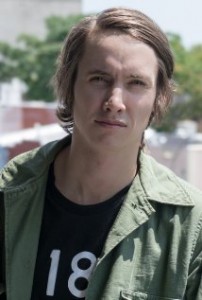
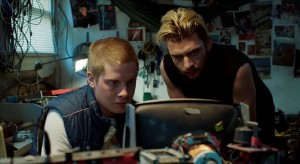
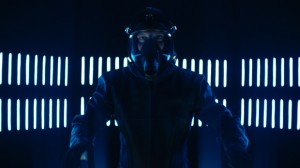

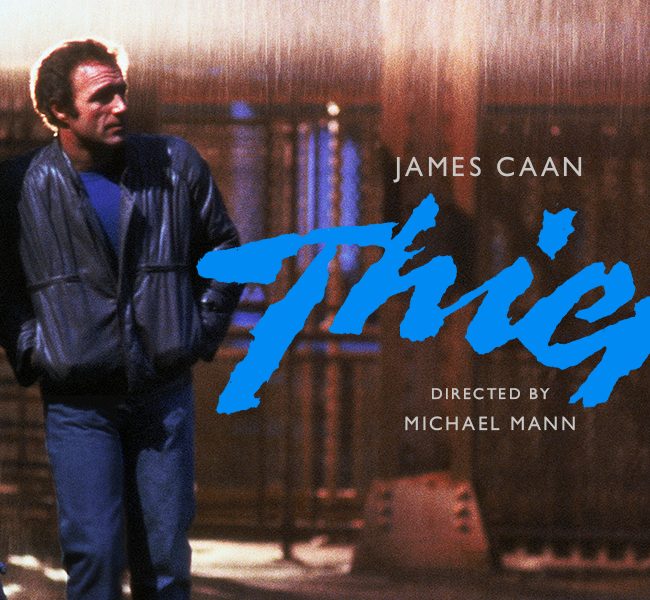
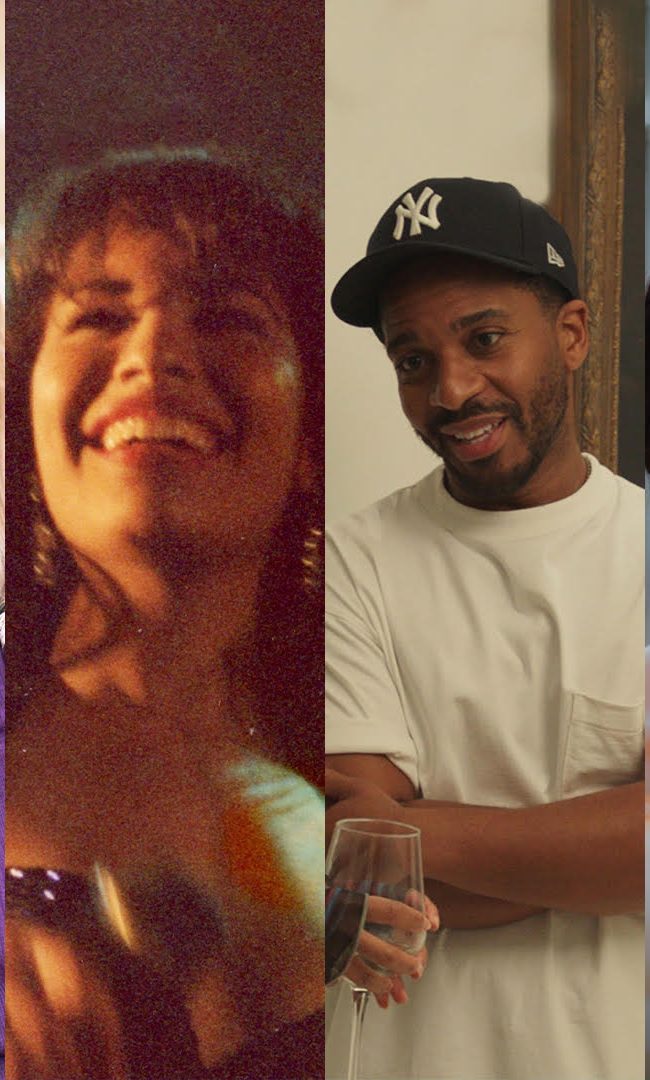


steve g
Very impressive movie, thank you Susanna for that interview. What was the meaning of the title of that movie?! The run he have to made at the end? Rabbit hole, jackrabbit his research probably brought this guy same place I went… It just stunt me maybe a lil more Because me, my friends.. Steven, Eric and Simon.. Reassuring that if I did understud probably this was a made on purpose… the fact I knew what was coming.. I see those black dot ;)all the time.. My friends even meet where they said they meet.. Happy events alike that happen to people wuth same names doing lets call it offensive security.. The rabbit hole its nice projet with the help of computer and CERN ‘n linux.. I am dying to know what for him is exactly that bright light that made Max start running as fast as a jackrabbit . If you still know how to rearch him, would please copy paste him all this and put me in your “newsletter” email.. wanna read more about other movies your interest bring up. thk u